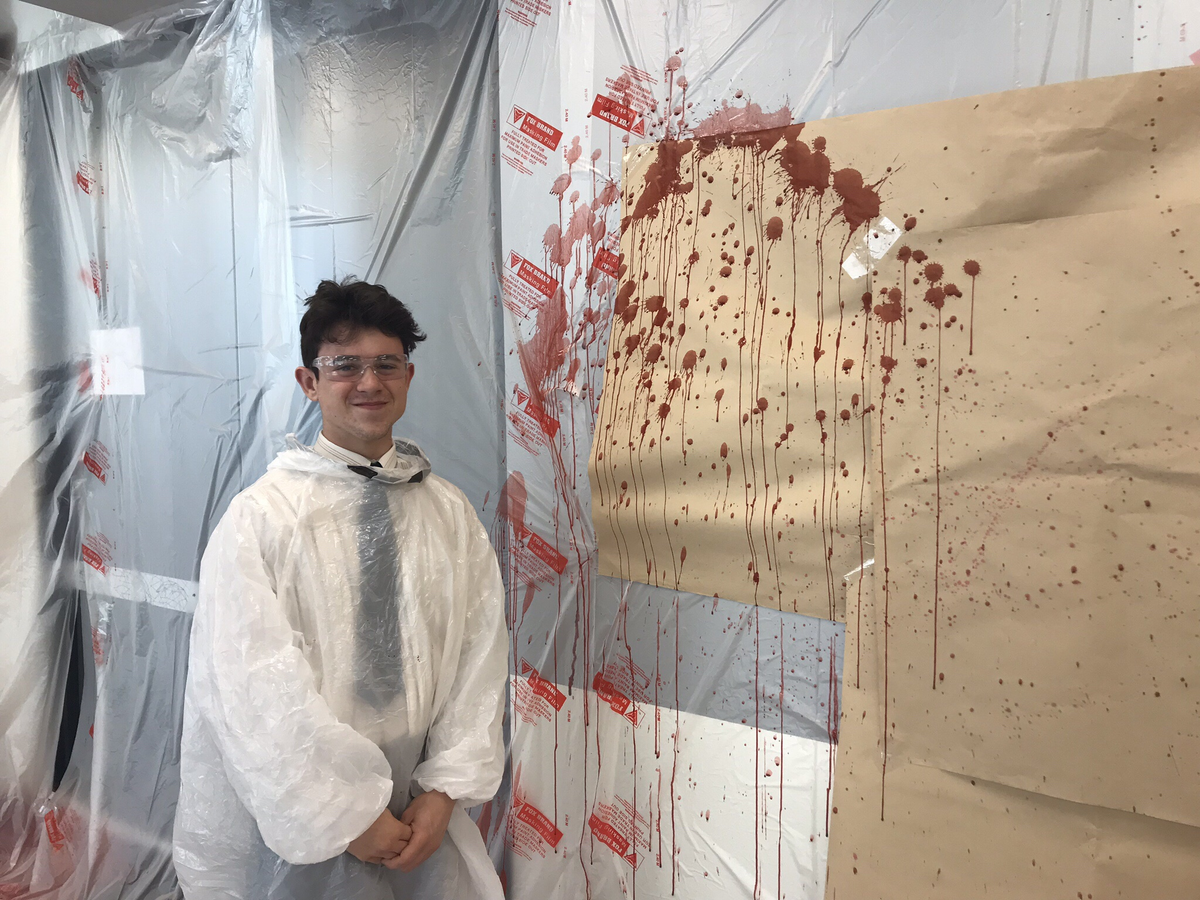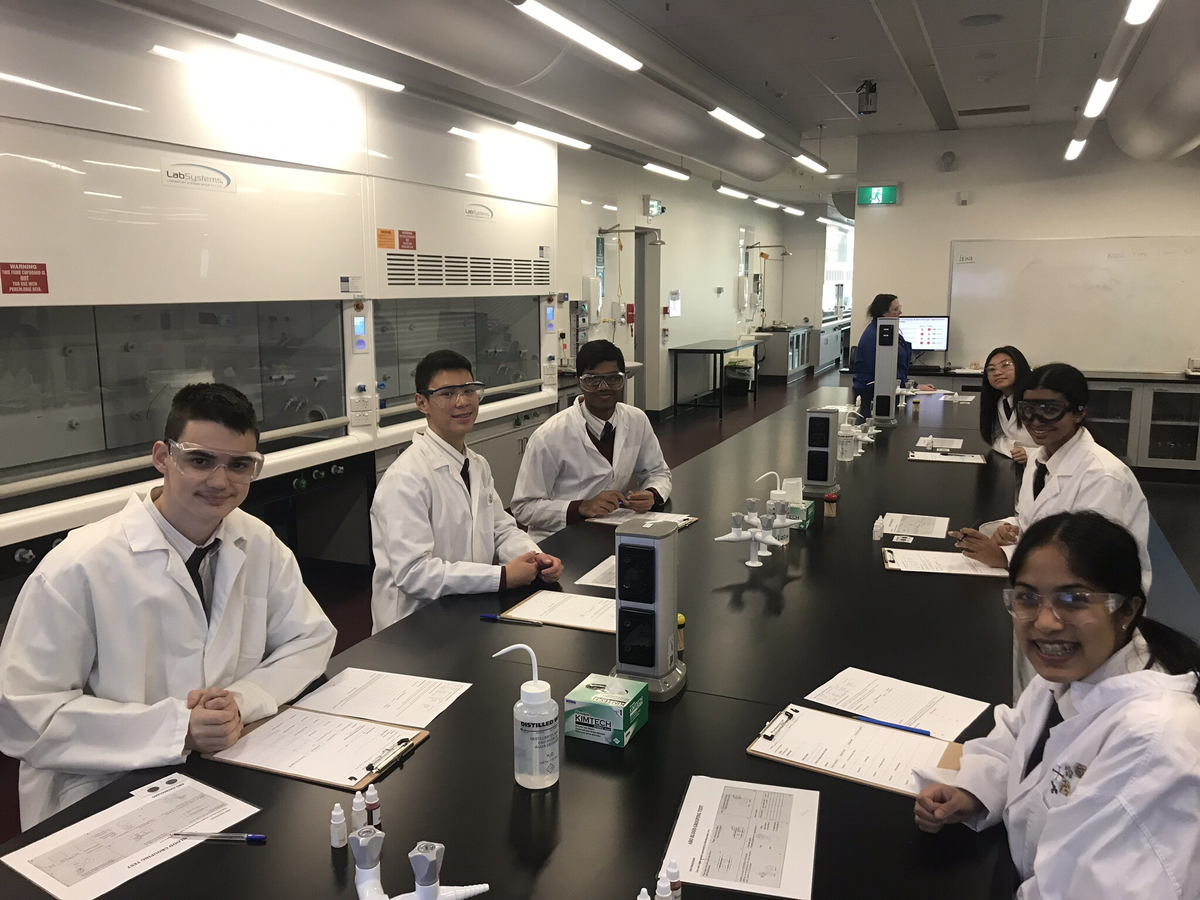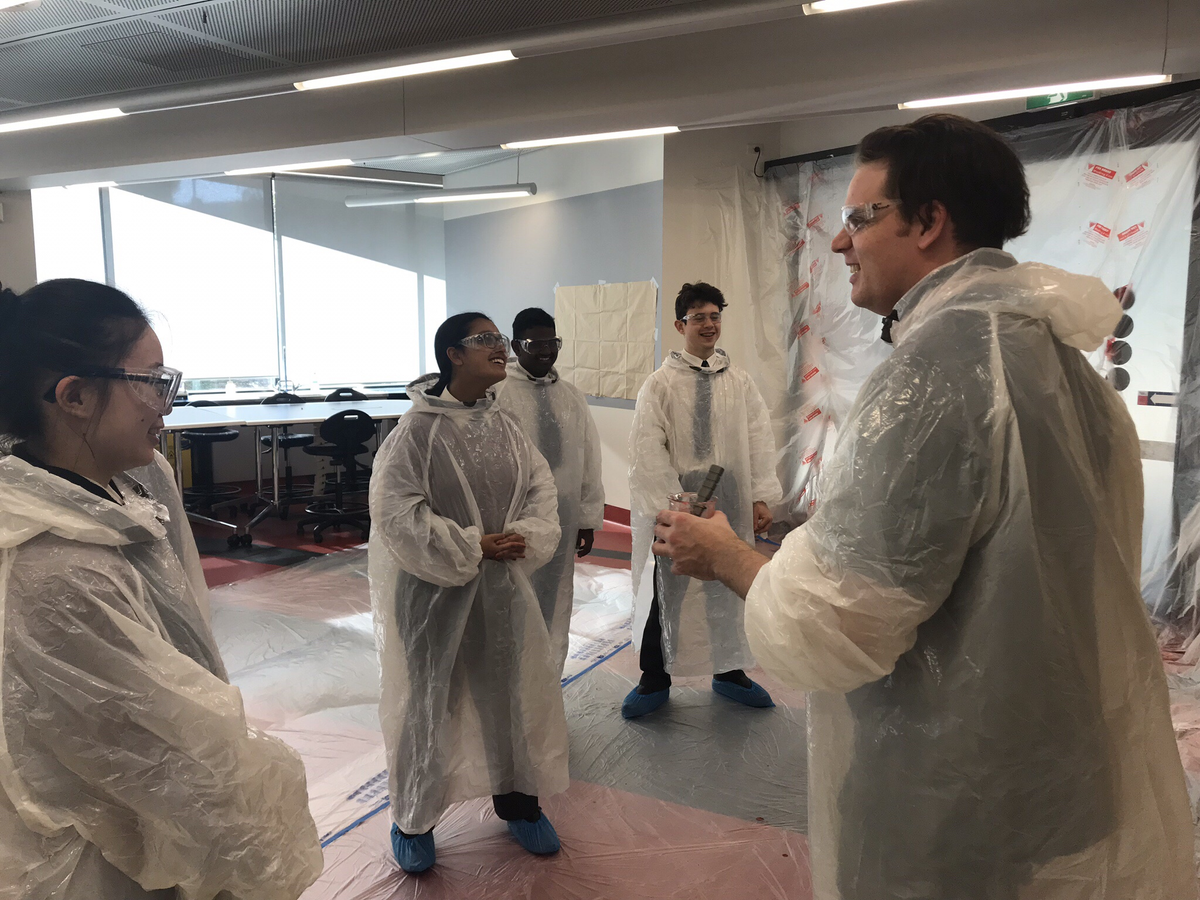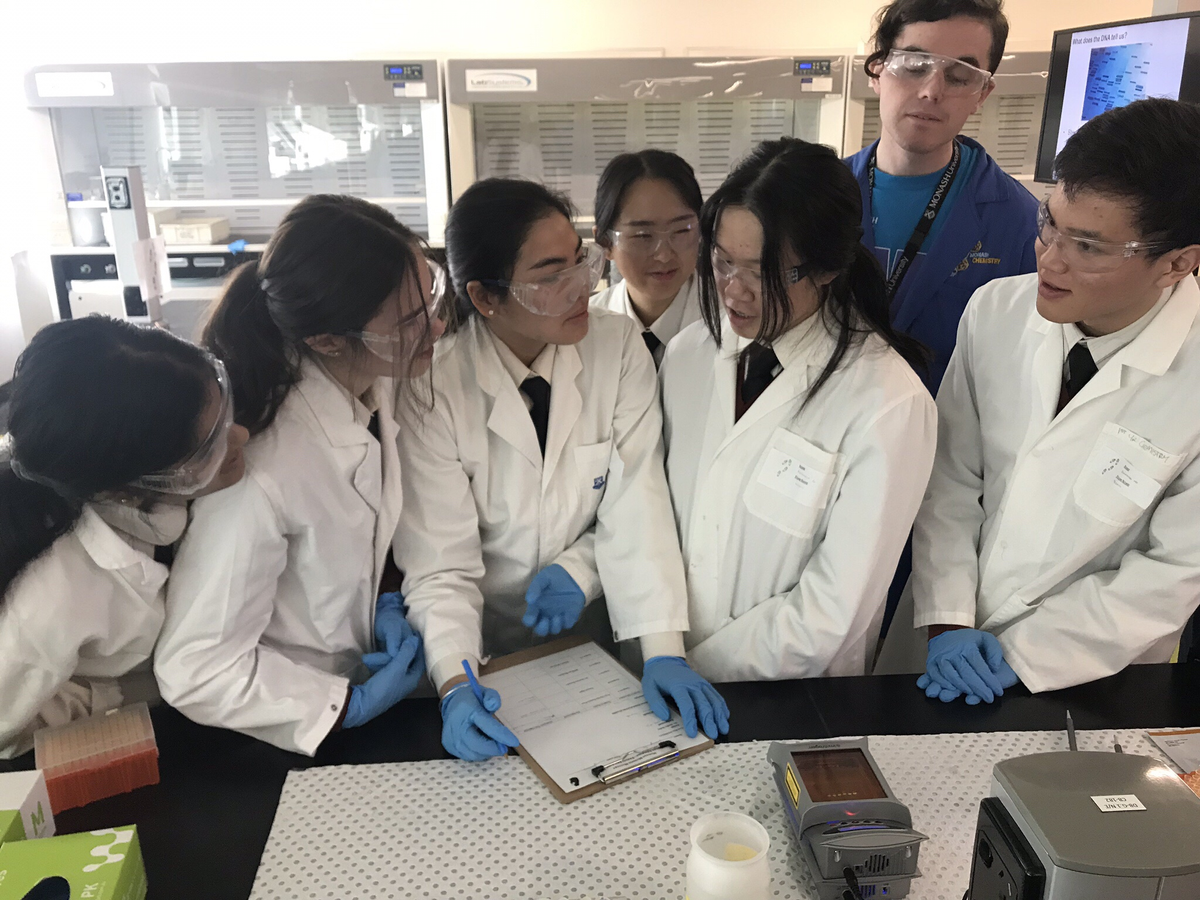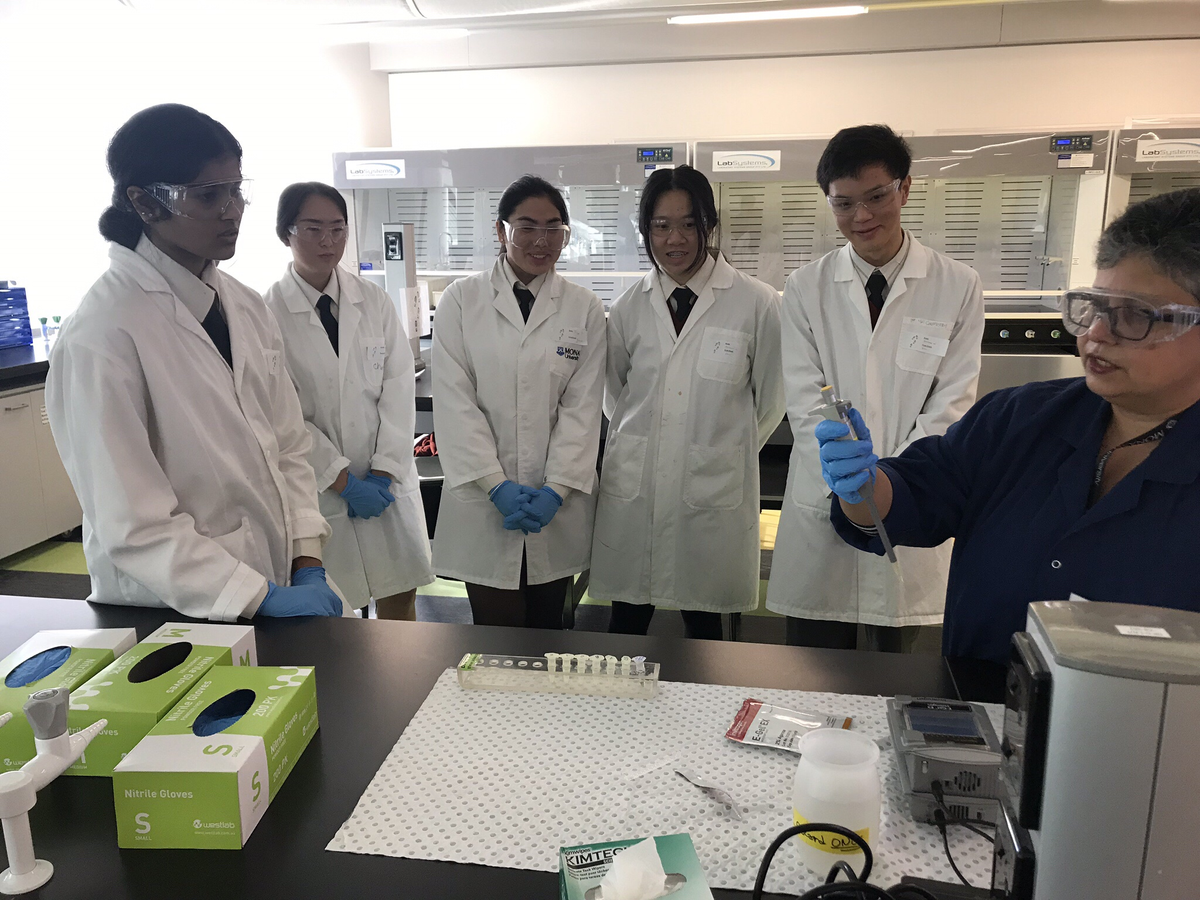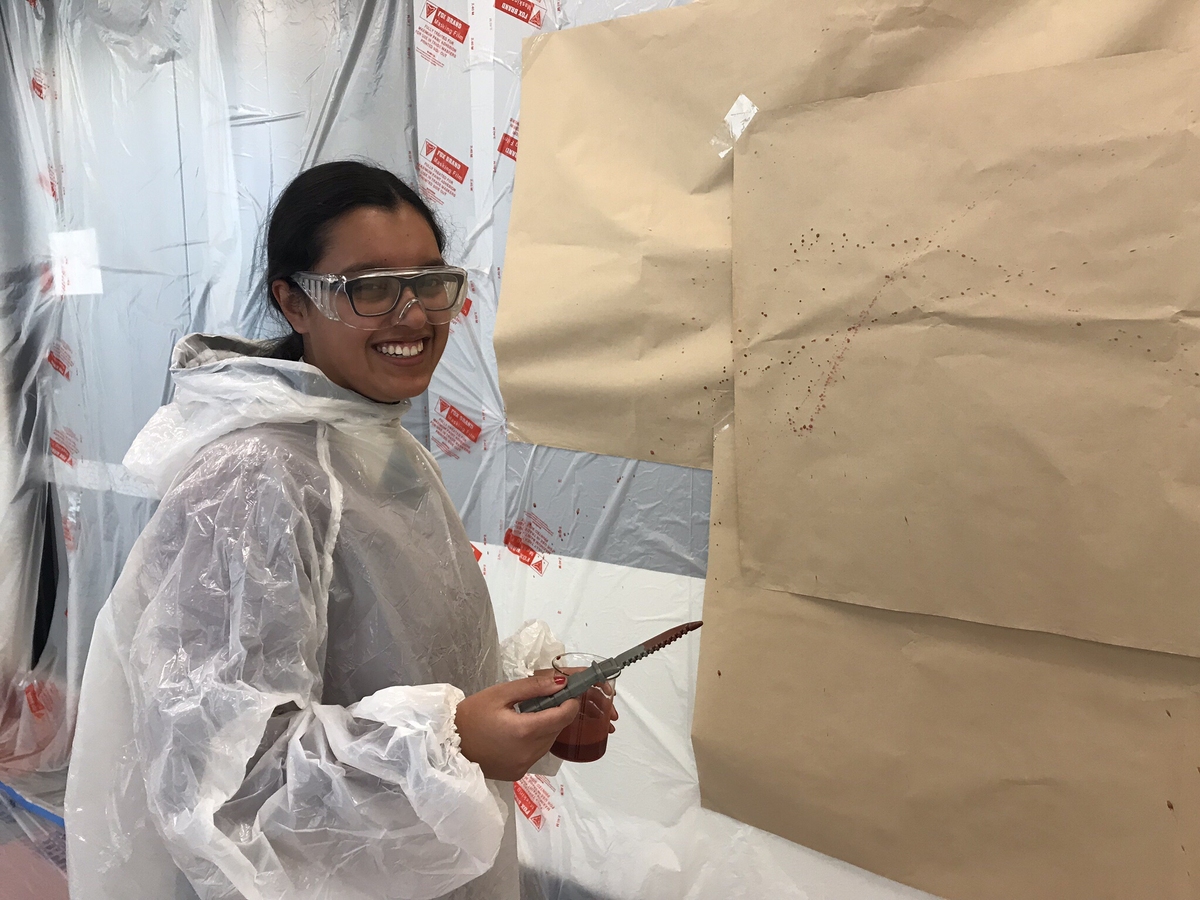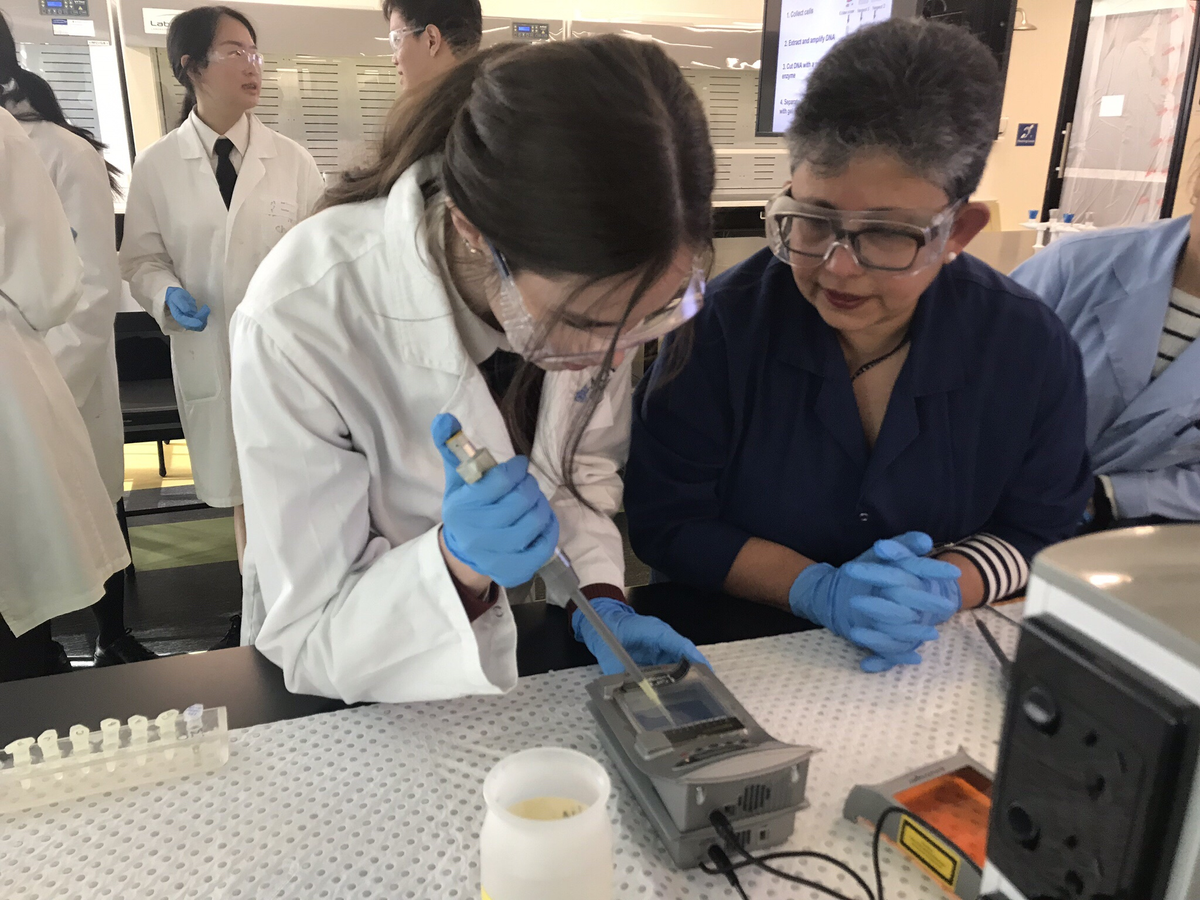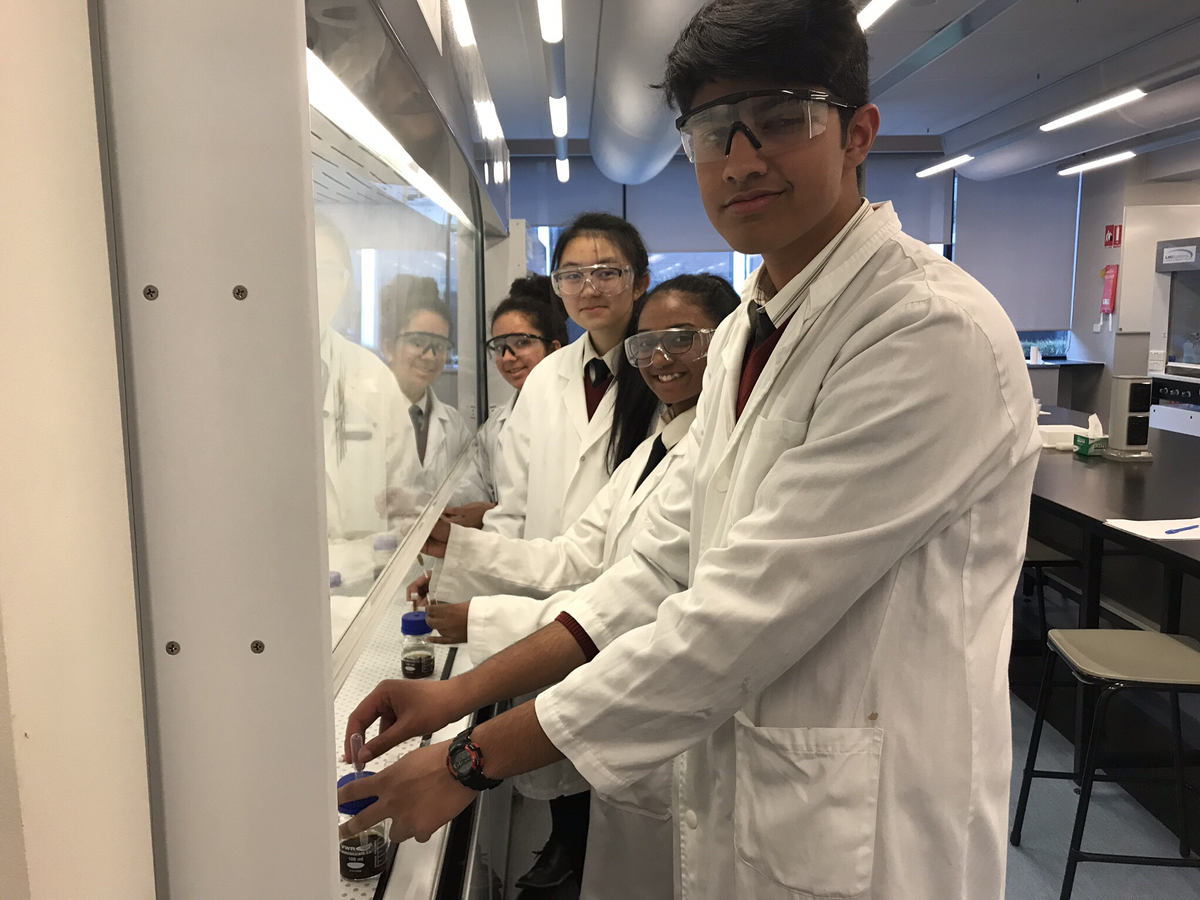Science News

Graeme Clark Oration
On 22 July, 17 Nossal students along with Ms Latham attended the Graeme Clark Oration at Melbourne Convention Centre. The oration, organised by the Convergence Science Network, is a highlight of the year for the scientific community of Melbourne and beyond as it is the largest free public science event in the southern hemisphere. This year, the orator was Dr Timothy Denison, who spoke about the challenges and opportunities for combining electrical and biological circuits for the treatment of disease.
We attended the special presentation for schools in the afternoon, where Dr Denison spoke about his work. He began with a self-introduction and took us along on his journey towards biotechnology. It was fascinating to hear his path from his initial work measuring cosmic waves to a PhD in genetics and exciting to know that science is a field with a vast variety of opportunities. Looking out from the rigid divisions of VCE subjects, it is comforting to see a discipline that functions as one well integrated unit. He then introduced the principle of biotechnology to us through the familiar example of the pacemaker, extending it to then explain bioelectronics – the concept of interfacing directly with the nervous system to monitor and modulate electrical activity. The complex procedure of nerve monitoring was made accessible to us through his engaging and interactive explanations. He also briefly outlined the challenges of introducing electronics as an alternative to and alongside pharmaceuticals, only one of the many obstacles in implementing new solutions.
Interestingly, a huge focus of the presentation was the economic and ethical considerations present in the new device and its journey to the commercial market. It was surprising to see how much the accessibility and availability of new technology features even in its conception and development. Dr Denison left us with a brief picture of what the future in terms of treatment of neurodegenerative diseases could look at and the vast possibilities still to be explored. One of the most striking parts of his talk was his focus on the importance of studying and exploring more than just science in one’s professional life. He said “my background in anthropology has served me just as well as my ability to do calculus”, describing his foray into anthropology as crucial to his understanding of the various aspects that are essential in working in the health sector because ultimately, the people are the focal point and we cannot be understood just with any one specialty.
This was followed by the actual oration, which was attended by university students, researchers and other science enthusiasts. Since the audience was primarily people who study science or work in the field, in this presentation he spoke about his recent work in greater detail, at which point we found ourselves glad to have attended the presentation for schools. He then extended this discussion to include the economics involved in the implementation of bioelectronic systems such as that which he worked on. It was interesting to learn about the interactions between scientists and healthcare workers and what they need to consider when collaborating, such as workflow and economic validity, clinical necessity and technical maturity. Dr Denison concluded the oration by outlining what the next steps are in the field of biotechnology, explaining that they aspire to extend the variety of conditions that can be treated with bioelectronic systems from tremors and other nervous system disorders to include other prominent disorders like dementia and depression.
After the speech, the two of us attended the formal dinner that followed the oration with Ms Latham. Though we found the food rather unique and different from what we are accustomed to eating, the bread was definitely a highlight of the night. Throughout the dinner, we were also presented with the opportunity to converse with like minded students from other schools and in between servings of food, various awards were presented, as well as a Q&A with Dr Denison. A recurring point of emphasis between all of the presenters was that everything they were being celebrated for achieving was actually a group effort from countless people, from fellow scientists and engineers to patients partaking in trials. This reinforced to us the importance of effective collaboration and teamwork skills and inspired us to subsequently further develop these skills.
This event also highlights Australia and Victoria’s commitment to accessible and innovative science which is inspiring and gratifying. As a group of students advancing rapidly towards the professional research and workplace, occasions like these are integral in demonstrating the vast array of opportunities within our state and country in cutting edge science.
We would highly encourage all students to attend this excellent event in future years, and the other free public science lectures conducted by Convergence Science Network throughout the year for an enriching window into the scientific prowess of Australia and the world.
Elisa Karaim and Nanditha Hareesh
Year 12
Monash Murder Mystery
The sky fell into darkness as Dr Shelly Helix headed home after another long day at the laboratory. She rubbed her tired eyes and unlocked her car door just before the sound of fast paced footsteps. But before she could turn around, blood splattered onto the hard, concrete floor of the carpark, Shelly Helix was murdered. Dr Shelly Helix was a successful scientist and youngest Nobel prize nominee. Suspects included Professor David, the laboratory owner, Naomi Agar, a research assistant, Dr Adrian Burette, a slightly mad scientist and the tricky twins, William and Robert Buchner. Who killed the innocent Shelly Helix?
On 11 June, a group of Year 11 students, studying Units 1 and 2 Chemistry had the opportunity to participate in the Monash University Murder Mystery. Students worked in small groups to solve the crime using forensic skills with assistance of the Monash staff. After each of the activities students had to use their findings to eliminate suspects which would ultimately lead to identifying the murderer. Some of the activities included analysing blood types, blood splattering, fingerprinting, DNA analysis, infrared and UV Visible spectrometry.
Observing blood splatters helped us identify whether the culprit was right or left-handed. In DNA analysis, a restricted sample was provided where we ran a gel test to compare each suspect’s DNA to the murder’s. Students used magnifying equipment to identify the fingerprint pattern of each suspect and matched it with the fingerprint found at the crime scene. In Infrared Spectroscopy, students had to analysis different white powders (Aspirin, Salicylic Acid and Sodium Salicylate) through IR spectroscopy. Students were given a sample of blood from the crime scene and tested whether the blood agglutinated or not, to identify its blood type. The last activity was to analyse whether the victim had overdosed from consuming wine using graphs produced by UV-Visible spectrophotometry.
Through all the activities, the teams gathered their evidence to which they concluded the culprit was suspect D, William Buchner. The Monash Murder Mystery was an insightful and exciting experience as students were able to apply their own knowledge and get a glimpse into the world of forensic science.
Carley Chan and Kaveesha De Silva
Year 11
Science Week Activities
Nossal High School will be running Science Week from Monday 5 until Friday 9 August.
We have some great events planned:
Monday Lunchtime: Chemistry demonstrations in the Physics room. Our highly talented laboratory technician Leeann will be demonstrating to students some of the things that they might be doing in the future if they pursue a career in Chemistry.
Tuesday Lunchtime: the Snake Man will be here. This is an annual event enjoyed by all. Come along to meet some of your favourite reptiles. Plenty of photo opportunities here.
Thursday: scavenger hunt. Students will be given a list of extremely difficult and cryptic clues about Science at Nossal. Lists can be collected from the Science Office before school. The first student to return their completed list to Mrs Latham will win a prize.
Friday Lunchtime: the Teacher vs Students Science Kahoot quiz. A Nossal tradition, students compete with each other to decide who will challenge the teachers in a riveting quiz that consists of only science questions.
This year, the theme for Science Week is Destination Moon so the questions will largely relate to space. A huge thank you to Mr Clark, Ms Loel, Ms Lloyd, Mr Hamilton and Mr Jelinek for agreeing to be on the staff team. There are many students eager to show you they are smarter than the teachers.
In Week 9, there will be a Science Assembly during which a number of awards will be given to students for the various competitions they have entered this year including the Big Science Competition, the Science Olympiads, the Australian Society for Medical Research Quiz and the High School Cancer Competition.
Diane Latham
Science Domain Leader




